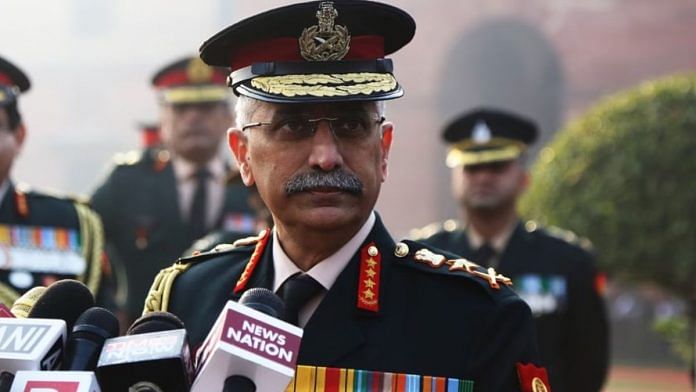New Delhi: Contrary to Chinese claims of just four casualties in the Galwan clash of 2020, the Chinese “fished out several bodies” of their own from the river and beat up Indian soldiers in captivity, former Army chief General M.M. Naravane has written in his soon-to-be-released memoir.
He has also said that 16 June is a day which Chinese President Xi Jinping will never forget because the Chinese People’s Liberation Army (PLA) suffered “fatal casualties” for the first time in over two decades in the fighting in his memoir, Four Stars of Destiny. Excerpts of the book which will be released next month were shared with news agency Press Trust of India (PTI) by the publisher, Penguin.
In the book, General Narvane writes about the clash between Indian and Chinese forces on the intervening night of 15-16 June, 2020, saying, ”It was one of the saddest days of my entire career”.
“June 16 is Xi Jinping’s birthday. This is not a day he will forget any time soon. For the first time in over two decades, the Chinese and the PLA had suffered fatal casualties,” he writes.
According to Naravane, the Chinese have been following “wolf-warrior diplomacy” and “salami-slicing tactics” everywhere with impunity and browbeating smaller neighbours like Nepal and Bhutan, while staking their ever-increasing claims in the South China Sea, without having to pay any costs, especially in terms of human lives.
“It took India and the Indian Army to show to the world that enough is enough and to challenge the neighbourhood bully,’ he writes.
Speaking about the Galwan incident, the former Army chief writes that the clash happened because the Chinese PLA refused to remove two tents that it had erected in Patrolling Point 14 (PP-14).
The trouble in Eastern Ladakh began in May 2020. By 15 June, flag-level meetings had been held at multiple locations including at PP-15 and PP-17A, where troops fell back over agreed distances.
“At PP-14, however, whenever we asked the PLA to remove their tents, they kept changing their stance. From ‘some more time was needed’, to ‘we will check with our superiors’, to it ‘being beyond the mandate of the talks’.”
“From this stonewalling, it became evident that there had been no intention of removing those tents in the first place. To counter this, we also decided to pitch our own tents in the same general area,” he writes.
He notes that Late Colonel Santosh Babu, Commanding Officer of 16 Bihar, went forward with a small party of troops to attempt to defuse the situation, but the PLA were in no mood to relent and attacked them.
“Thereafter, it became a free-for-all. With darkness setting in, both sides rushed in additional troops and a see-saw engagement continued throughout the night,” he recounts.
Although armed, neither side opened fire, instead using batons or clubs and throwing or rolling down stones on each other’s positions, he says.
Also read: Did PLA force Galwan captives to make ‘confessions’? Footage surfaces in India-China video war
‘A not-so-favourable situation’
General Naravane further says that the Chinese PLA were able to induct troops in armoured personnel carriers at the time of the fight owing to better connectivity on their side which tilted the balance in their favour.
He writes that he told the then Northern Army Commander Lieutenant General Y.K. Joshi during a phone call at 1:30 am on 16 June that the Army must hit back and make the PLA pay.
“Daylight revealed a not-so-favourable situation… Five jawans had died of injuries in the melee. The next morning, as the head count was taken, we realised many were missing. As tense negotiations began, many of our boys, who had either got disoriented or had been briefly detained by the PLA without food or medical aid, returned to base,” General Naravane writes.
He adds that the Chinese “too suffered substantially”.
“Our men who were in Chinese hands had been kept out in the open and they had seen several bodies being fished out of the river. Whenever that happened, they were subjected to a fresh round of beatings,” Naravane writes.
He adds: “The sheer savagery of their response was in itself indicative of the losses they had suffered. Initially, they did not admit to any casualties at all; then many months later, admitted to four or five killed, including the CO [commanding officer] on their side.”
(Edited by Poulomi Banerjee)
Also read: ‘Danger remains’, warns global think tank with India-China border standoff set to enter its 4th year



